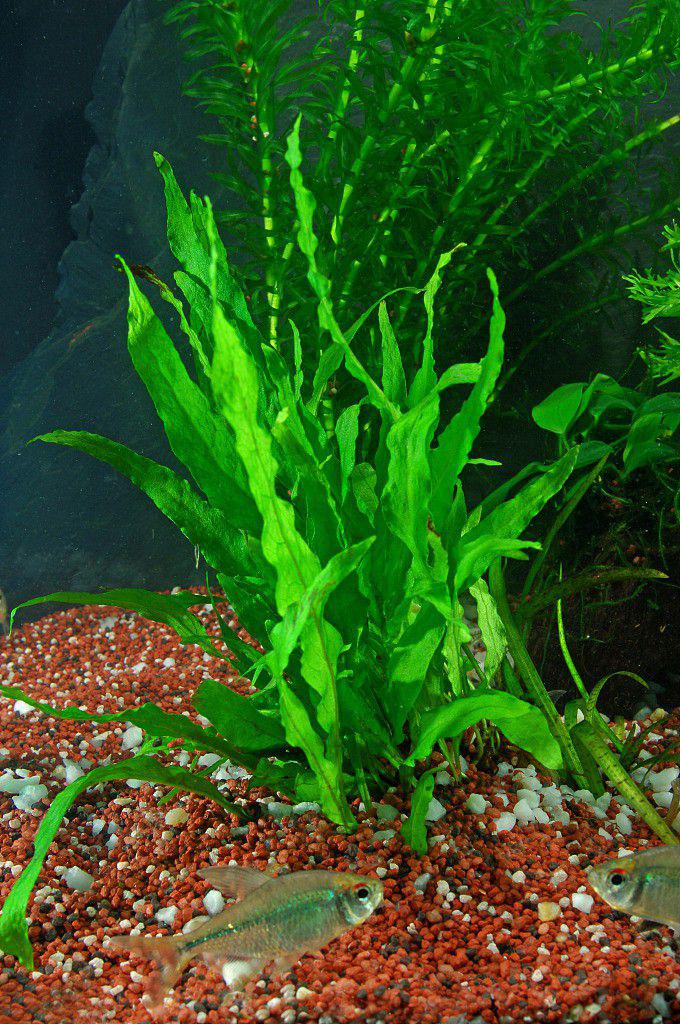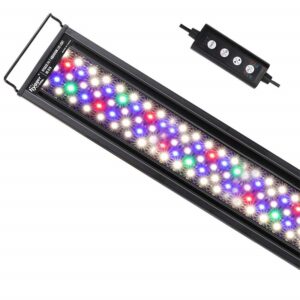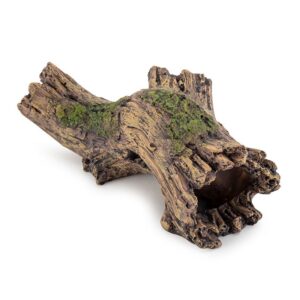Many people like plants in fish tanks while they are keeping fish. Most plants as fish tank decorations can not only make fish tank looks less monotonous and boring but also add some vitality and color to them. A strong ornamental fish tank may be a wonderful visual enjoyment for you, it will help you stretch nerves, relax body and mind, and add energy to your daily life.
Content Table
However, sometimes you come home and suddenly find that the leaves of the plants start to become mutilated, even if they worked so hard to cultivate in a fish tank. Since you don’t have any aquatic pets in your tank other than fish, such as snails, crabs, or turtles, there is no doubt that the culprit of destroying your plants must be those innocent-looking fish in your aquarium, who never seem to take a break from swimming around all day long.
Anyone who has ever set up a herbarium knows that one wrong fish can ruin your whole effort. Some fish, like snails, love to eat the leaves and roots of plants, and they are complete tank destroyers. Sometimes your fish eat the plants you have cultivated so hard and they swim around happily in the water, but your heart takes a huge hit and you suffer as much as the ruined plants. If you don’t want to ruin your good mood and those good-looking plants in your tank, read this article carefully, it provides some assistance guide for your tank plants.

Aquatic Plants VS Ornamental Fish
If you’re thinking about planting an aquarium, you may be wondering: which fish will eat and harm aquatic plants? which aquatic plants are safe and good with fish?
Fortunately, there are some easy-to-grow varieties that aren’t harmful to fish. Hygrophila is one of these plants and is fairly common in many home aquariums. The leaves soften as the plant grows, and fish can eat it, too. Water sprite is another plant that isn’t harmful to fish. Its foliage is tough enough to resist most types of nibblers, but it isn’t a suitable choice for planted aquariums.
Silver Dollar fish are a common species of freshwater fish that eat plants and are a great choice for beginners. It’s not advisable for them to live with plants. Because they are found in brackish water, they are likely to eat live plants in your aquarium. As a rule, monos don’t do well with fast-growing aquatic plants. These fish are likely to be more successful if you have a variety of live plant species in your tank, and are especially good for aquaponic systems.
Monos are similar to Silver Dollar Fish, but they are a bit larger and tend to feed on vegetable matter. This makes them prime candidates for your home aquarium, where live plants aren’t available. Because they live in brackish water, they are likely to devour live plant material, too. Many types of aquatic plants don’t do well in brackish water, so they’re unlikely to eat your aquarium’s plants.
Other common plants that fish can’t damage include Potamogeton and Elodea. These are difficult for fish to digest so can’t be eaten quickly. Lemna, meanwhile, has an unpleasant taste that makes it unsuitable for fish to eat.
You’ll need to be careful to choose your aquatic plants when you keep fish with them. The right combination will ensure that your aquarium’s water quality isn’t negatively affected by any of these species.

What to Do If You See Your Fish Eating Plants?
Many fishes are herbivorous, they will eat the leaves of other plants in your planted tank. It’s a common phenomenon that fish nibble on your plants, and it happens when they don’t get enough nutrients. However, there are ways to combat plant browsing and keep your aquarium healthy.
The first thing to do is to ensure that your fish are getting enough food. Feed them regularly. Limit the amount they eat to about five minutes, and make sure to provide them with a high-quality diet that meets all of their nutritional needs.
If your fish have started eating your plants, it’s important to separate your fish and plants. To prevent this problem from happening again, separate them and place them somewhere else in the tank. The best way to do this is to separate your fish from the plants. If you’ve bought plants from a store, remove them and store them separately.
A good option for live plants in your aquarium is water wisteria. It’s easy to grow and adds oxygen to the water. You can plant several different varieties. And you can experiment with different types and see which ones your fish will leave alone. But also consider reducing the number of fish in your tank. Keeping their numbers down will reduce the chance of eating your plants.

What Aquatic Plants Do Fish Not Eat?
Aquatic plants like the java fern and water sprite are common choices for aquariums. However, these are not suitable for many types of fish, including the Silver Dollar fish, Buenos Aires tetras, Severums, Mono’s, and Cichlids. The main reason is that these plants are slow-growing and contain tough leaves, which are unpalatable to fish.
Most fish do not eat java fern, so you do not need to avoid it. In converse, hygrophila and rotala are commonly eaten by fish. Try a few plants and see which ones your fish don’t like. It may take a little experimentation to figure out which plants are best for your specific type of fish.
Aquatic plants are beneficial for your fish’s health. You can buy different types of aquatic plants in the pet store, and the Hygrophila plant is among the most common. This is a great choice for your aquarium, as its leaves grow longer and soft. Your fish will likely pick at the leaves and even eat the whole plant.
A good choice for an aquarium is an anubias plant. The anubias plant is a popular option. You’ll find at least one type in your local fish store. The anubias plant is among the few plants that need no CO2. They are low on the list of plants that need no CO2 to grow. You’ll find different varieties of anubias in a variety of colors and sizes.
There are more types of aquatic plants to choose from: the Bolbitis and the Microsorium. Both types of aquatic plants need to be attached to driftwood or rocks for them to grow properly. They thrive in low-light conditions but are unpalatable to most fish. The Crinum, a slow-growing plant that is very hardy, has long, broad leaves that rise above the water’s surface. The onion plant is one of the most common varieties.
If you’re thinking about adding some plants to your tank, you can try planting them without substrate. But be sure to keep big stones around them to prevent your fish from digging into them. Some plant species have very thin leaves, and this makes them easy to be torn by fish.

Best Fish for Planted Aquarium
The best fish for planted aquarium is a variety of species of livebearers. They are not likely to harm your plants and are adaptable and hardy. You can choose from a wide variety of colors and breeds, and they are easy to maintain. These fish also make great pets for beginners, and they can easily adjust to the surroundings. They will also blend in with your planted tank’s other inhabitants.
Raised in natural environments, rasboras can survive in a planted aquarium, and they are very colorful. They are great as community fish, and they are usually kept in schools of six or more of the same species. Rasboras are highly social and will swim in a coordinated fashion. Their graceful movements will stand out in a plant-filled aquarium. They will also enjoy a tank with live aquatic plants.
Tetras are a perfect fish for a planted tank. They are small, easy to maintain, and peaceful by nature. Some of the most popular tetra are the neon tetra, bleeding heart tetra, and cardinal tetra. If you have more space in the fish tank, you can keep a community of these peaceful creatures. If you are interested in having a community, tetra is a great choice.
Tips for Maintaining a Planted Tank
One of the most important maintenance tasks for a planted tank is removing dead leaves. You can remove leaves as needed, but make sure you remove any that are already dead. Pruning aquatic plants also encourages new growth, and helps to prevent rotting matter. These simple tips will help you keep your planted aquarium healthy and happy. Follow them religiously and you’ll see your fish thrive! Here are some more tips to help you keep your plant life looking great.
After a plant dies, it will shed dead parts. Clean them up immediately, and wait for them to grow back. Otherwise, they’ll degrade and harm your pet. If you notice algae on your planted tank, clean it off with a small brush. For more tips to take algae out of fish tanks, go to the article to deal with algae in different ways.
Remember to keep the glass cover clean to allow lighting to enter the water deeply. You should also change 1/3 water once a week. If you notice any changes, contact your local aquarium store for more tips or ask for help online.
Changing water regularly is important for planted tanks. Frequent water changes will remove excess waste, nutrients, and dissolved solids. Inadequate water changes can lead to harmful effects on plants and animals, such as algae growth. Try to change the water at least once a week in a high-tech tank, and once a week in a low-tech tank. If you do not know how to clean a planted tank, you can use a five-gallon bucket and rinse out the substrate.
Conclusion
In conclusion, to prevent your fish from ruining your planted tank and to minimize the loss, first of all, you need to do careful and detailed research after you set up the fish tank, to find out which fish will eat the leaves and roots of the plants, which fish have no interest in the plants, and choose the right fish for your plants.
Secondly, when you find that you have bought the wrong fish into your planted tank, the first time to deal with the problem properly, do not delay. Procrastination is the deadly enemy of chronic death in your tank. You have to move your fish or plants to two different places to keep them safe.
Finally, do your best to create balance in your aquarium and maintain a harmonious healthy, and natural ecological relationship, so that your fish and plants can truly live together in harmony.


Leave a comment